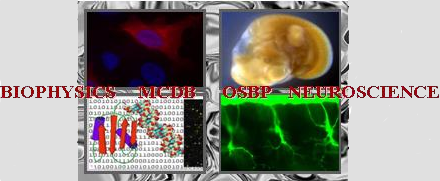Poster abstracts
Poster number 96 submitted by Jessica Storer
The Roles of RNA Polymerases II, IV and V in Defense Against Geminiviruses
Jessica Storer (Molecular Genetics and Molecular, Cellular and Developmental Biology Program, The Ohio State University), Jamie N. Jackel (Molecular Genetics, The Ohio State University), Tami Coursey (Molecular Genetics and Molecular, Cellular and Developmental Biology Program, The Ohio State University)
Abstract:
Epigenetic modifications are influential in organizing and controlling gene expression. One such example of epigenetic control is histone and cytosine methylation that leads to transcriptional gene silencing of potentially harmful DNA, such as transposable elements and viruses. Geminiviruses are a family of plant viruses that package small, circular, and single-stranded DNA genomes. These form double-stranded DNA intermediates that associate with histones to form minichromosomes. As such, these viruses are subject to, and repressed by, epigenetic modifications leading to transcriptional gene silencing. Arabidopsis encodes plant-specific RNA polymerases IV (Pol IV) and V (Pol V), currently thought to establish repressive cytosine methylation leading to transcriptional gene silencing. Using geminiviruses as a de novo model to more precisely define the role of Pol IV and Pol V in initiating chromatin methylation, we determined that these polymerases are required for the establishment of repressive dimethylated histone 3 lysine 9 (H3K9me2) marks. However, they are not required to initiate cytosine methylation, implicating another polymerase in this process. Pol IV and V are multi-subunit enzymes that are related to, and share subunits with, RNA polymerase II (Pol II), an enzyme that orchestrates the formation of heterochromatin and transcriptional gene silencing in S. pombe. We found that plants deficient for Pol II are hypersusceptible to geminivirus infection, and that Pol II is also required for establishment of H3K9me2 on the viral chromatin. In addition, Pol II is also required to recruit Pol IV to the viral genome. Thus Pol II is essential for establishment of a repressive histone mark, likely via recruitment of Pol IV. Its involvement in cytosine methylation is under investigation.
Keywords: RNA-directed DNA methylation, RNA polymerase II , geminivirus
